Removal of Benign Cysts, Skin Lesions and Moles
Solihull Medical Cosmetic Clinic under the supervision of Dr Sagoo offers full and comprehensive treatments for helping to improve various skin conditions using the latest in laser and skin technology. Dr Sagoo, a cosmetic dermatologist and GP with over 20 years of experience has treated thousands of patients and frequently receives referrals from GPs as well as private hospitals.
A lot of skin lesions are not funded to be removed under the NHS anymore, as they are classed as "cosmetic" lesions. After a full assessment, Dr Sagoo will choose which form of removal is required and is likely to cause the minimum possible amount of scarring. If suspicious, he shall send the lesions after removal for analysis.
The costs of removal are somewhat less than private hospital charges.
Dr Sagoo also works alongside a consultant dermatologist, who will be consulted if a skin lesion has unusual features.
Some of the common skin lesions Dr Sagoo may help with are:
Skin Lesions
- Syringomas
- Pearly penile papules (PPP)
- Angiofibroma.
- Lipoma
- Sebaceous cysts
- Multiple lipomas (Dercums Disease)
- Venous lakes
- Cherry angiomas
- Cafe au lait patches
- Sebaceous hyperplasia
- Dermatofibroma.
- Skin tags.
- Moles (All types)
- Milia.
- Seborrheic keratoses.
- Age spots.
- Sun spots /lentigos
- Lipoma
Pigmentary Conditions
Acne Type Skin Conditions
- Keratosis pilaris.
- Acne.
- Acne scarring.
- Rosacea.
Infections
- Warts.
- Fungal nail infections.
- Dermatosis papulosa nigra (black warts on dark skin).
Before and After Minor Surgery Treatment Gallery
Gallery of minor surgery procedures carried out by Dr Sagoo
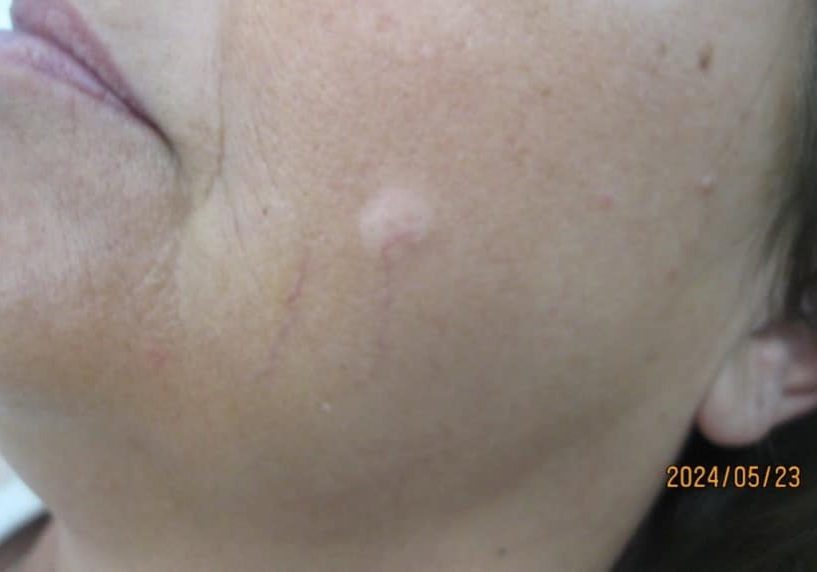
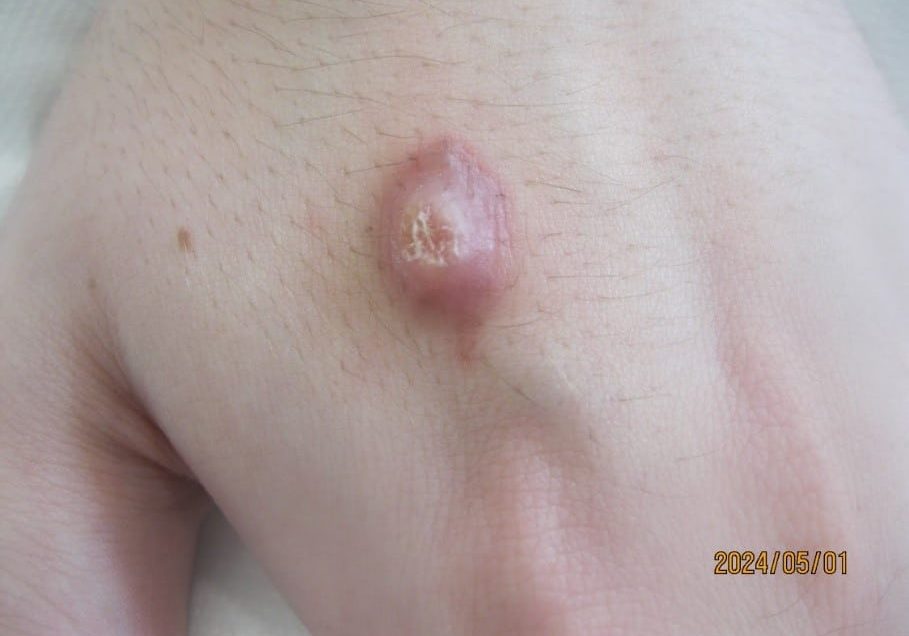
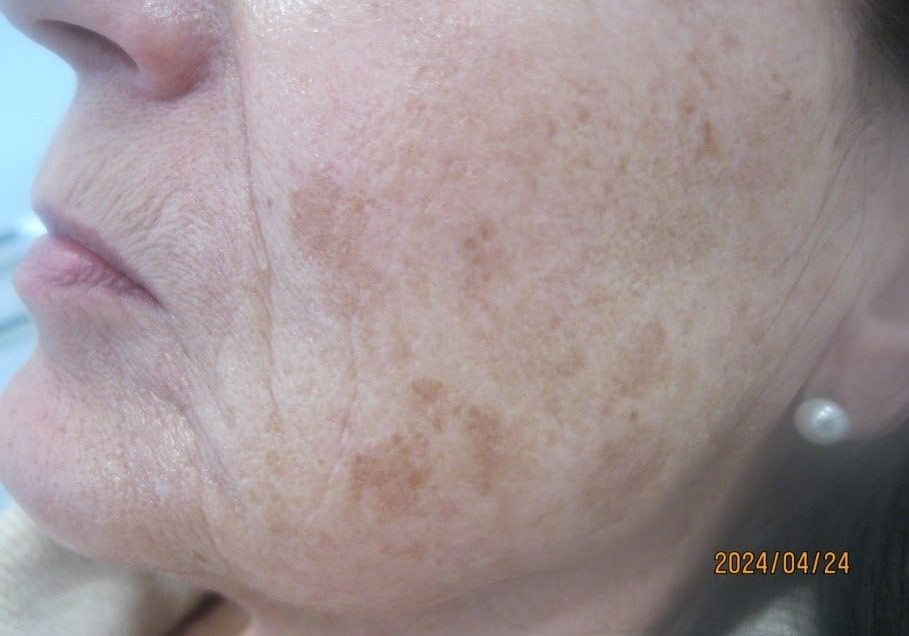
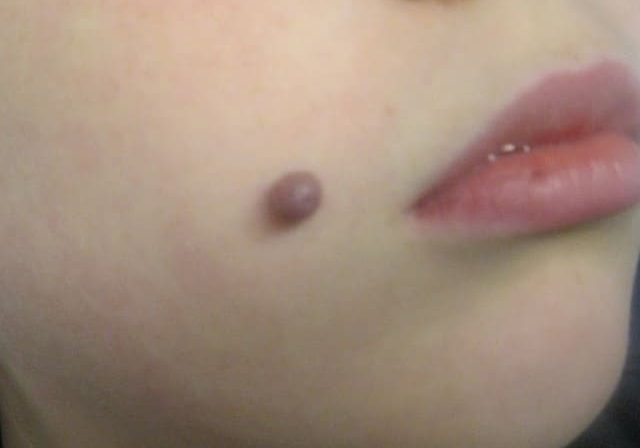
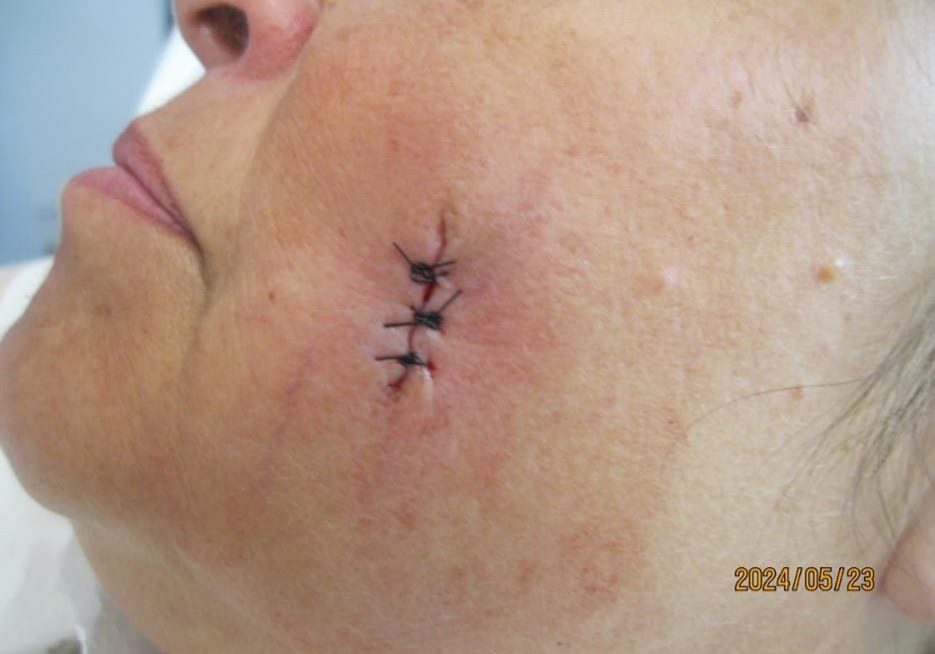
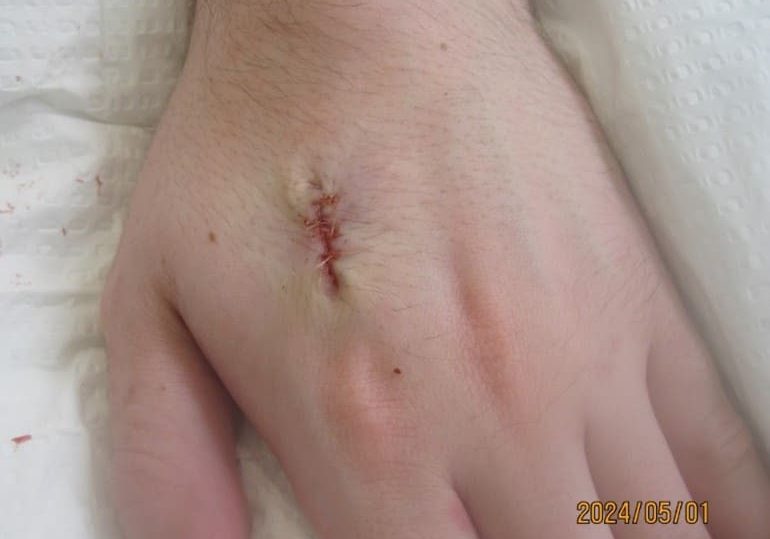
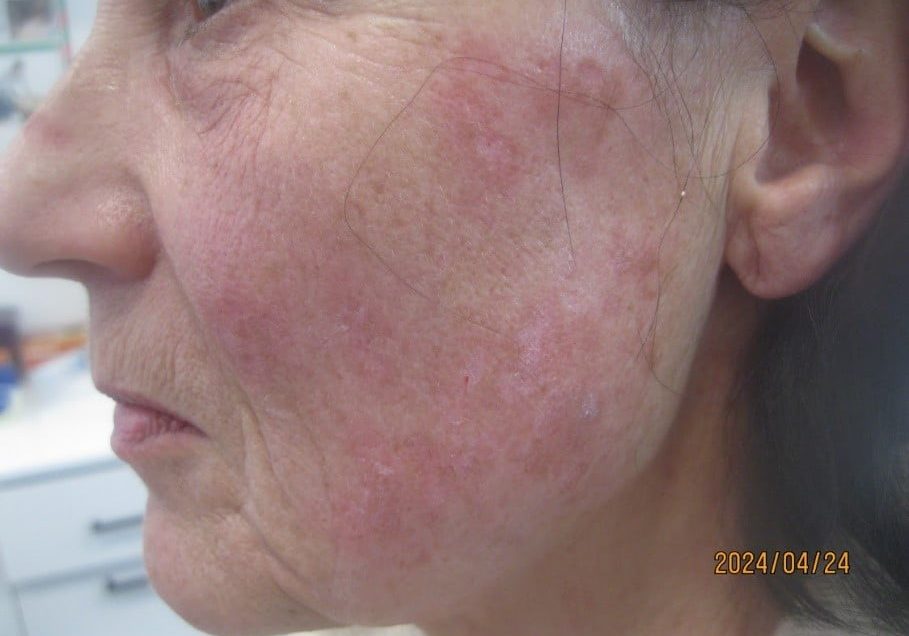
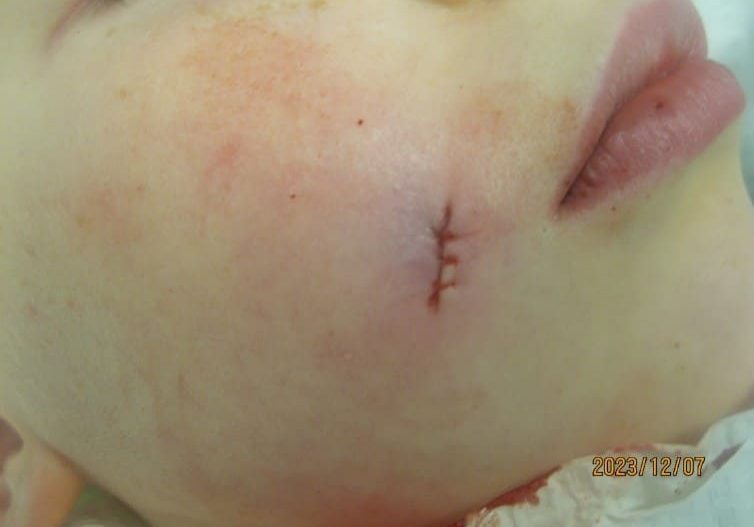
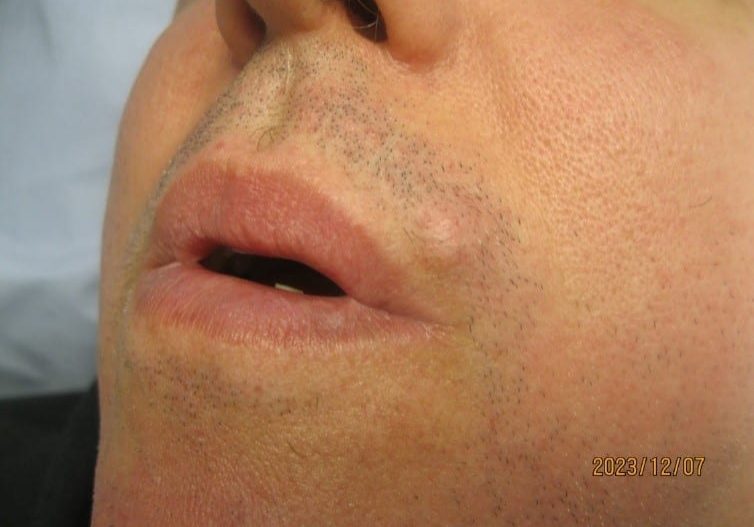
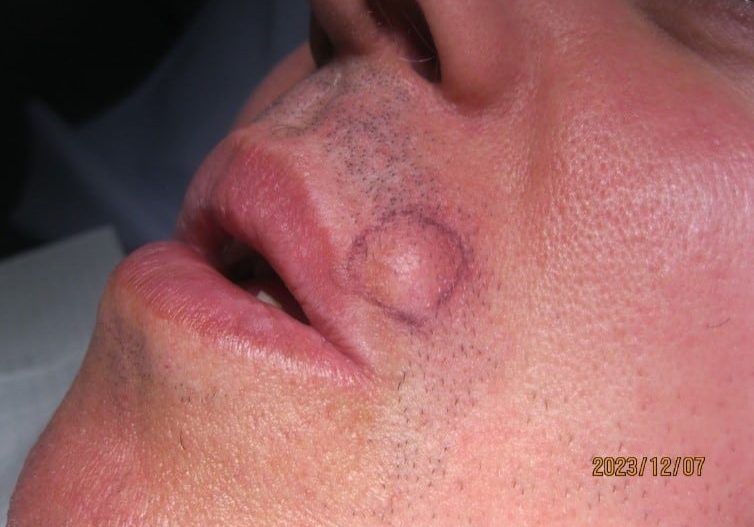
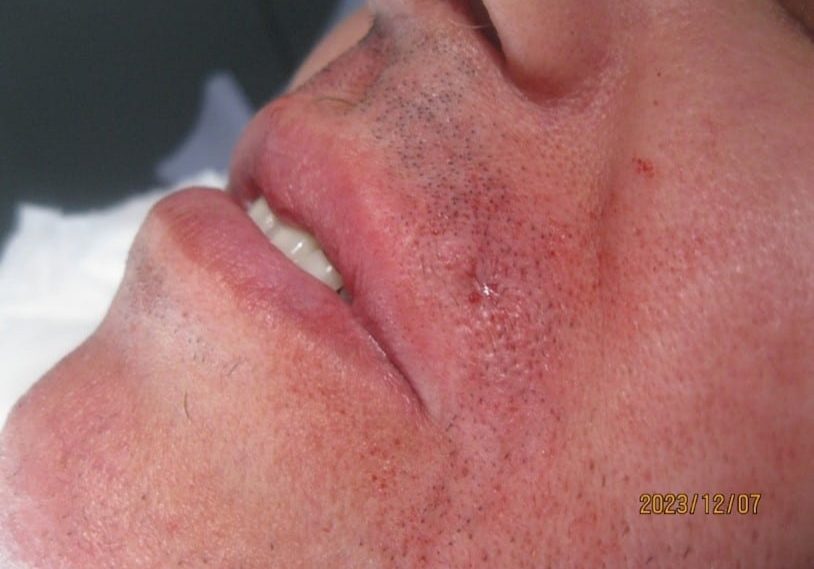
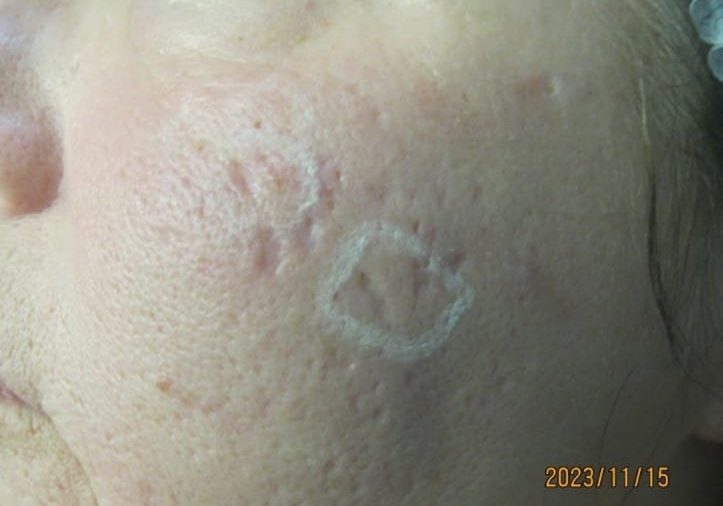
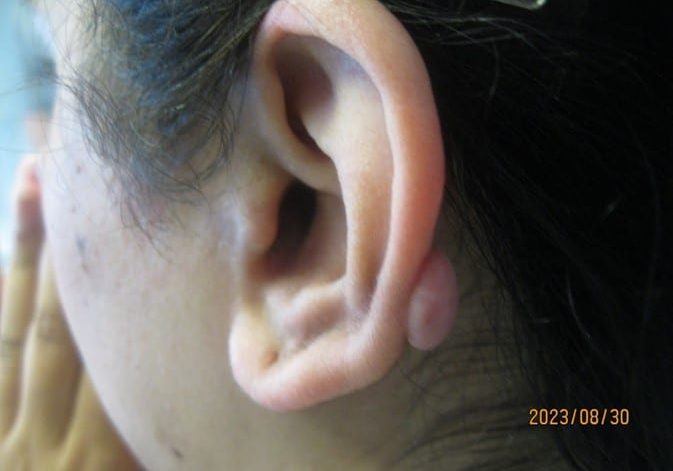
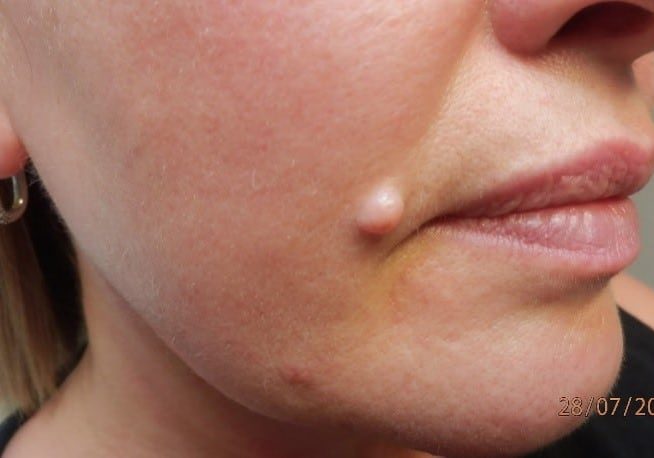
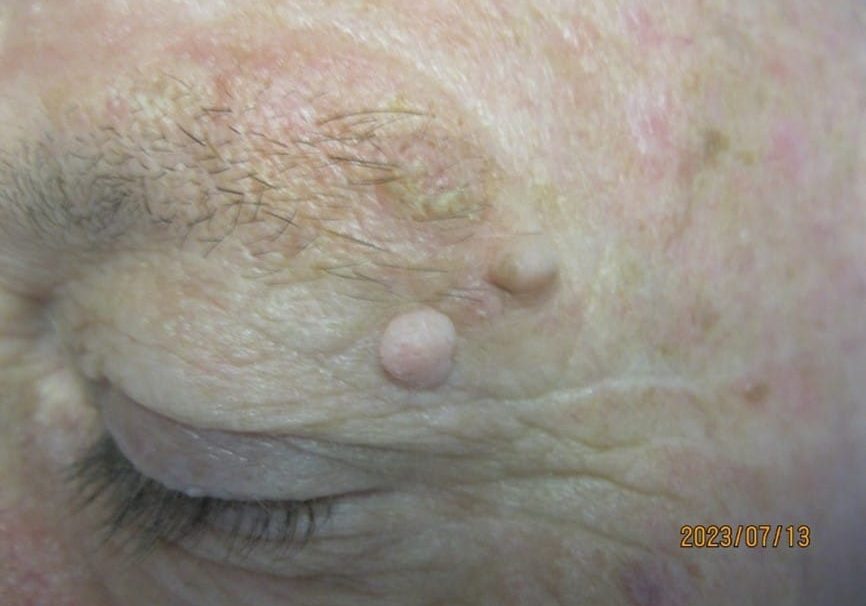
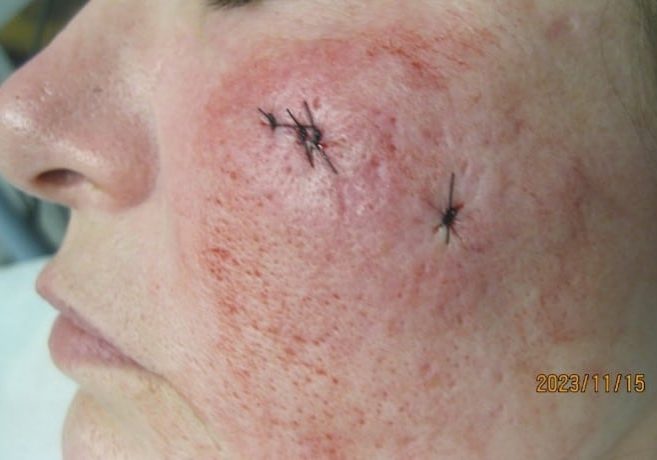
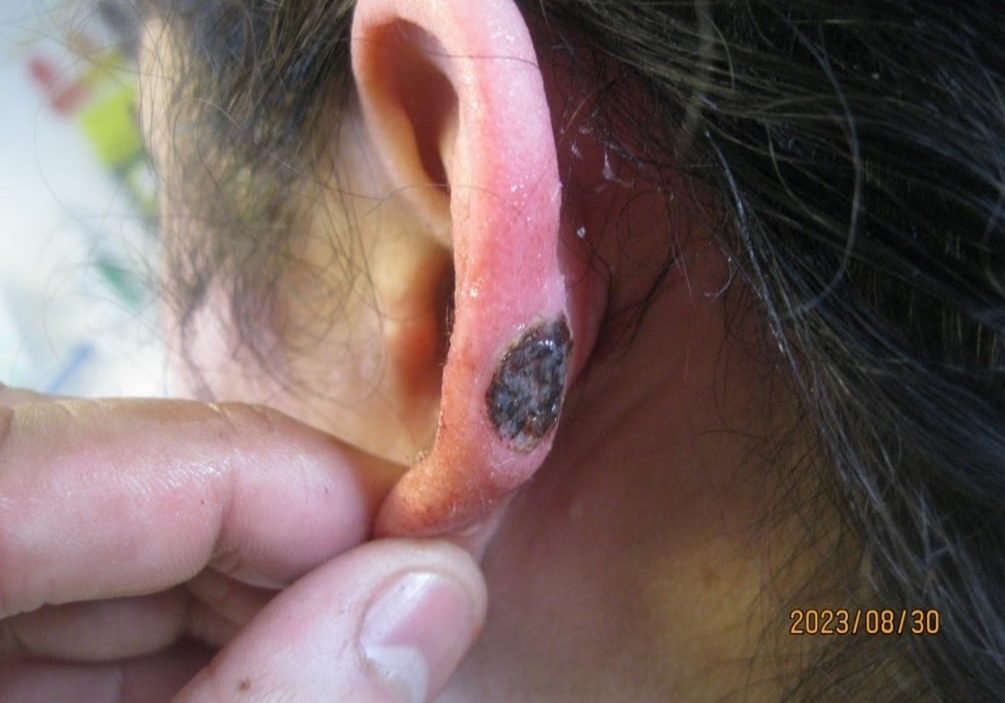
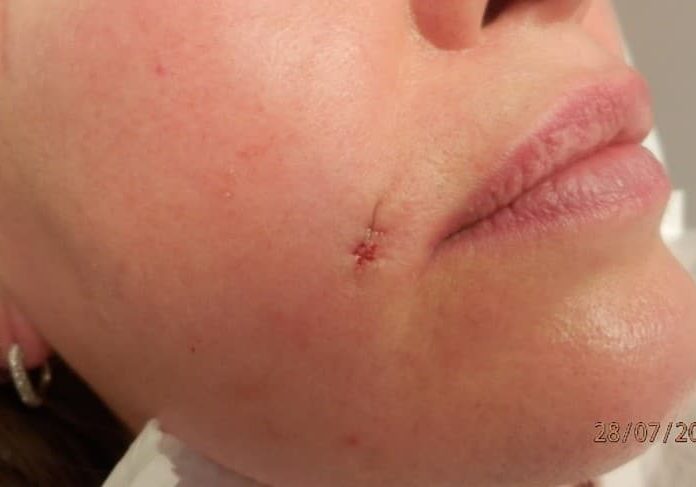
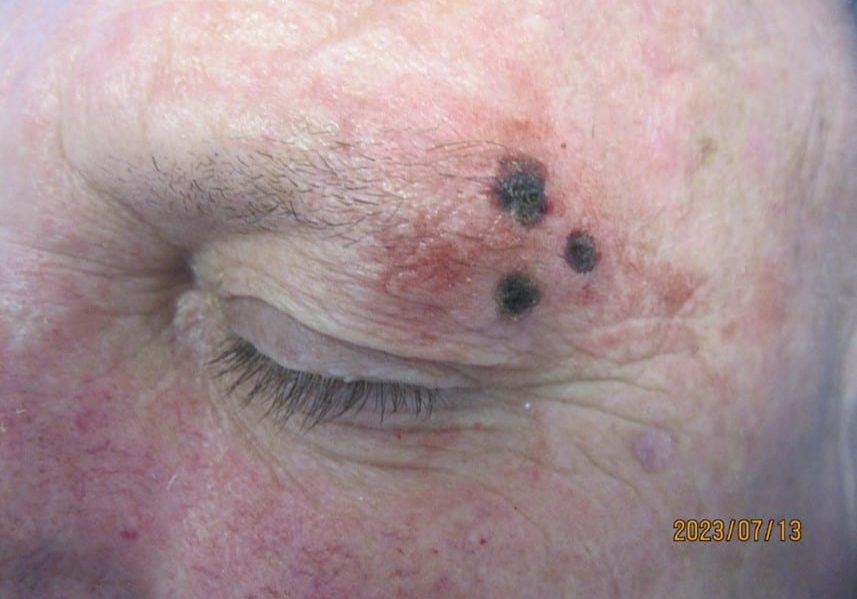
Angiofibroma
 Angiofibromas are benign 1-5mm bumps that are very common on or near the nose and look like small moles. They are a cosmetic nuisance for some patients, but are not dangerous and cannot turn into skin cancer.
Angiofibromas are benign 1-5mm bumps that are very common on or near the nose and look like small moles. They are a cosmetic nuisance for some patients, but are not dangerous and cannot turn into skin cancer.
Angiofibromas can often be safely and effectively removed by shave excision or electro surgery, and occasionally using liquid nitrogen. Do not attempt self-removal of angiofibroma, as this can often lead to permanent scars. Angiofibroma removal at Solihull Medical Cosmetic Clinic is a commonly performed procedure that usually gives great results.
Dermatofibroma
 A dermatofibroma is a common benign skin lesion, though in many cases arises after a minor injury such as an ingrown hair or insect bite. The exact cause is unknown, though it is thought to be a reaction to a minor injury in some cases.
A dermatofibroma is a common benign skin lesion, though in many cases arises after a minor injury such as an ingrown hair or insect bite. The exact cause is unknown, though it is thought to be a reaction to a minor injury in some cases.
A dermatofibroma is most common on the arms and legs; once they develop, they tend to persist indefinitely.
Dermatofibromas are firm-hard nodules and can vary in colour from pink to darker brown colours in darker skin types. Many people will in fact have multiple dermatofibromas.
Occasionally, Dr Sagoo will perform a skin biopsy, if there is any doubt as to the diagnosis.
Dermatofibromas are mainly a cosmetic nuisance, although they can rarely be tender. They can also be in the way of shaving one's legs and can get nicked or cut on a regular basis in some patients.
Dermatofibromas can often be removed using various techniques, including liquid nitrogen, shave excision with a scalpel, or even vaporisation using a CO2 laser. Solihull Medical Cosmetic Clinic offers a range of treatments that often allows these lesions to be removed with minimal scarring.
Skin Tags
Skin tags are harmless, fleshy, dangling skin growths that are usually brown or flesh-coloured.
Skin tags are common in warm, moist areas where clothing usually rubs, such as around the neck, underarms, chest and groin. Skin tags may also be found around the eyes.
The tags occur for a number of reasons. Family history is common, and some skin tags are age-related and may be created through friction rubbing. The tags are also common in overweight individuals.
Skin tags are often numerous and catch on clothing or jewellery. Although they do not cause harm, they are unsightly.
Skin tags can usually be removed in different ways. Dr Sagoo, through his extensive clinical experience, may be able to remove them through excising, cautery, freezing with liquid nitrogen cryotherapy, or laser excision using the latest technologies.


Keratosis Pilaris
Keratosis pilaris (KP) is a very common skin condition. Keratosis pilaris is a form of mild eczema, characterized by tiny bumps on the outer areas of the upper arms, and cheeks. The thighs and buttocks can be affected. There is coarseness to the skin, and sometimes the skin can have a red or brown discolouration to it. Keratosis pilaris is occasionally itchy, but otherwise, it is only significant cosmetically.
It is commonly observed in children and young adults and tends to improve as we age. The condition is often inherited.
Keratosis pilaris is a benign condition and treatment is usually only necessary for cosmetic reasons. Lubricants may help with the dryness but do not tend to clear the bumps.
 While different creams may improve the appearance of keratosis pilaris, the condition remains persistent. Mild peeling agents are most likely to be effective in opening the plugged hair follicles by removing the excess skin. Each affected person may respond differently to therapies, but urea preparations, glycolic acid preparations, as well as TCA peels, topical retinoid/vitamin A and mild topical steroids are the most commonly used therapies that may help improve the condition in many patients. Microdermabrasion may be useful in smoothing texture for some patients.
While different creams may improve the appearance of keratosis pilaris, the condition remains persistent. Mild peeling agents are most likely to be effective in opening the plugged hair follicles by removing the excess skin. Each affected person may respond differently to therapies, but urea preparations, glycolic acid preparations, as well as TCA peels, topical retinoid/vitamin A and mild topical steroids are the most commonly used therapies that may help improve the condition in many patients. Microdermabrasion may be useful in smoothing texture for some patients.
It is an inherited and chronic condition, keratosis pilaris treatment should be continued regularly to maintain the results. Fortunately, it is one of the conditions that tend to improve with age on its own. Keratosis pilaris treatment should be thought of with the goal of improvement rather than cure. Solihull Medical Cosmetic Clinic offers a full range of treatments supervised by Dr Sagoo.
Moles
Moles may be tan, brown, black, reddish-brown, red, purple, or skin-coloured and perfectly flat or raised. Most moles about are the size of a pencil eraser (about 6 mm).
Some people like their moles, while others may be bothered by their appearance. The cosmetic improvement of the skin is a frequent request among people with moles.
Certain moles become darker and more apparent with sun exposure. These typically lighten somewhat in the winter months. Pregnancy may also cause darkening of moles. Moles can occur anywhere on the skin, including the scalp, ears, eyelids, lips, palms, soles, genitals, penis, and anal area.
The medical term for most moles is melanocytic nevus, which is composed of masses of melanocytes, the pigment-producing cells of the skin. However, there are a variety of other skin lesions that may also appear mole-like. These include seborrheic keratoses, skin tags, dermatofibromas lentigines, and freckles (see above).
How can moles be removed?
True moles can often be treated by surgical removal. Moles cannot be treated by fading or lightening creams, bleaches, freezing, or other chemicals.
Solihull Medical Cosmetic Clinic offers a wide range of minor surgical treatments that may effectively remove a mole in many cases, including:
- Shave excision.
- Nitrogen freezing.
- Curettage.
- Cryocautery.
- Laser CO2 vaporisation.
- Punch excision and suturing.
Dr. Sagoo has years of experience and has removed hundreds of moles. He is able to assess moles and choose the appropriate treatment to excise the particular type of mole.
Following excision, the mole will routinely be sent to the lab for diagnosis, to make sure that there are no sinister changes. Dr Sagoo also works closely with a consultant dermatologist to refer to if an urgent assessment is required.
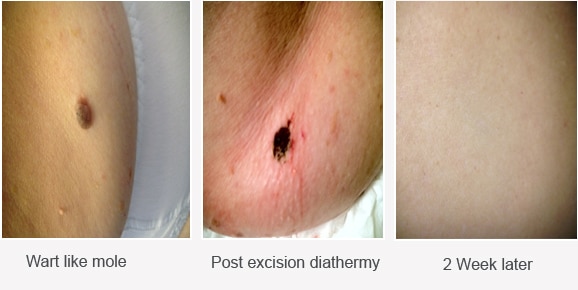
Milia
Milia, also called milk spots, are yellow/white cysts that can appear just under the skin. Milia are commonly associated with newborn babies but can appear on people of all ages. They are usually found around the nose and eyes, and sometimes on the genitalia, and are often mistaken by those affected as warts. Milia can also be confused with stubborn whiteheads. Unlike a whitehead, milia are very difficult to remove by yourself, and attempts at self-removal can often lead to permanent scars.
Solihull Medical Cosmetic Clinic uses a range of different treatments to that may allow milia to be removed safely and effectively with as little scarring as possible. Treatments that may be effective to remove milia include:
-
- Electrocautery.
- Medical microdermabarasion.
- Glycolic acid peels.
- CO2 Laser removal.
- Needle lancing.
Dr Sagoo is an experienced cosmetic skin doctor and will choose the appropriate treatment for you.
Seborrhoeic Keratoses
Seborrhoeic Keratoses are brown or black, raised, often crusted spots or wart-like growths.
They are types of viruses that occur mainly on chests, back and abdomen. There may be just one, though some people have several all over their bodies.
Seborrheic Keratoses are not cancerous (they are benign). They may be unsightly, and many patients request for them to be removed.
Reams, ointments, or other medication can neither cure nor prevent seborrheoic keratoses. There is no safe and effective home treatment for these seborrhoic keratoses and attempts at self-removal can often lead to permanent scars or skin discolouration.
In many cases, seborrheic keratoses can be safely and easily removed by Dr Sagoo, who has removed thousands of lesions using techniques such as curettage, excision, electrocautery, or CO2 laser.
Usually only one treatment is required.

Lipoma
A lipoma is a soft fatty lump. It is a benign (noncancerous) growth made up from fat cells that clump together. A lipoma can occur in any part of the body where there are fat cells.
Lipomas typically feel soft, and can be felt to move slightly under your skin when you press on them. Anyone can develop a lipoma at any age. Lipomas are common – about 1 in 100 people develop one or more lipomas. Some people inherit a tendency to develop lipomas and may have several on different parts of the body. Sometimes as many as 20 or more develop. However, it is more common to develop just one or two.
In many cases, lipomas can be removed by excising them, including removing the capsule they are in, and then closing with stitches.
For larger sized lipomas (greater than 10 cm diameter) Dr Sagoo can perform liposuction for the best chance to remove with minimal scarring.
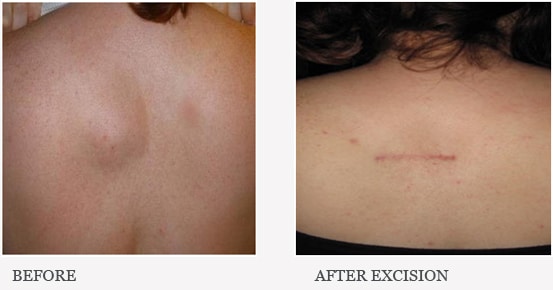
Warts
Warts are non-cancerous skin growths caused by a viral infection in the top layer of the skin. The viruses that cause warts are called human papillomavirus (HPV). Warts are usually skin-coloured and feel rough to the touch, but they can be dark, flat and smooth. The appearance of a wart depends on where it is growing.
Common warts - usually grow on the fingers, around the nails and on the backs of the hands. Plantar warts are usually on the soles (plantar area) of the feet. Most plantar warts do not stick up above the surface like common warts because the pressure of walking flattens them and pushes them down into the skin. Like common warts, these warts may have black dots on them. These are particularly stubborn to treat as they tend to go very deep into the foot. (See below.)
Flat warts are smaller and smoother than other warts. They tend to grow in large numbers. They can occur anywhere; in adults, they are often found in the beard area in men and on the legs in women. Warts are passed from person to person, sometimes indirectly.
Solihull Medical Cosmetic Clinic under the supervision of Dr Sagoo offers a complete range of treatments that may remove warts, including:
- Liquid nitrogen cryotherapy (freezing) is generally preferred. This treatment is somewhat painful but rarely results in scarring. However, repeat treatments are sometimes required.
- Nd:Yag laser – Dr. Sagoo is one of the few specialists in the UK to use laser treatments to remove warts.
- Electrocautery is often used for more resistant warts.
- CO2 laser vaporisation is another option for resistant warts.
- Shave excision with a sharp instrument may be used in some cases.

Fungal Nail Infections
Solihull Medical Cosmetic Clinic under the supervision of leading cosmetic doctor Dr Sagoo is the first clinic in the UK to offer this exclusive new laser treatment for fungal nail infections. Since promoting this new laser treatment, Dr Sagoo has received many referrals from chiropodists and GPs.

What causes a nail infection (onychomycosis)?
Dermatophytes are the fungi most commonly responsible for causing this condition. They are specialized organisms that live off of the protein keratin, which is the main component of nails and skin.
Where does nail infection come from?
Common sources of infection include swimming pools, public showers, gyms and nail spas. Tight fitting shoes and nail trauma can also lead to infection. Family history, poor health and increasing age are also factors that increase the risk of nail infection.
What are the symptoms of nail infection?
Some of the common symptoms of this condition include:
- Discoloured nails.
- Yellow streaks under the nail.
- Distorted or thickened nails.
- Brittle, crumbly or ragged nail.
- Nails separated from the underlying skin.
- The build-up of debris (nail fragments, skin) under the nail.
- White spots or streaks on the nail surface.
Only a physician can accurately diagnose this condition.
What are the current treatments available for nail infections?
Current treatment options for nail infection include oral drugs, topical drugs, and other treatments.
No single treatment is effective in all patients and there are risks and benefits associated with each one.
Oral drugs: In some cases, these can be very effective in eliminating nail infections and restoring clear nails.
Topical drugs: These are generally less effective than oral drugs in treating nail infections and restoring clear nails. The drugs are applied directly to the nails daily for up to 12 months. In some patients, the drug is ineffective because it cannot pass through the nail to reach the infection.
What is Genesis?
Genesis is a new laser that has been designed to safely and effectively treat onychomycosis (toenail fungus). By targeting the fungus directly, Genesis gets to the source of the problem immediately.
How does Genesis work?
Tiny pulses of light from the Genesis laser pass through the toenail to the fungus underneath. The fungus is irradiated without any damage to the surrounding nail or skin.
How long does the procedure take?
Depending on how many toes are affected, the Genesis Plus laser procedure will take approximately 10-20 minutes.
Is Genesis Plus painful?
Most people feel a slight warming sensation during the procedure. No pain medication is needed and most people find the treatment very easy to tolerate.
How many treatments will I need?
Many patients only need one treatment, but some need more if they have severe cases of toenail fungus.
Are there any restrictions on my activity post-procedure?
You can resume your normal activities immediately.
When will I see the results?
You won't notice anything immediately following treatment. However, as your nail grows out, the new nail growth should be clear. Toenails grow slowly – especially nails infected with fungus. So, it may take 6-12 months for your toenail to clear.
Will the fungus come back?
New infection with toenail fungus may be acquired from your environment, for example, in damp areas such as public swimming pools. Consult with your healthcare professional to understand how to prevent toenail fungus from reoccurring.
When can I apply nail polish?
While it is important to remove nail polish, decoration and jewellery prior to treatment, you can reapply nail polish 24 hours after treatment.
How does Genesis compare to other toenail fungus treatments?
Traditional treatments such as nail trimming, topical medicine, oral medicine or nail removal have significant drawbacks. Nail trimming doesn't treat the fungus. Topical medicines need to be applied for 12 months and have a low success rate. Oral medicines are taken for 3 months but can cause liver or kidney problems. Genesis Plus is a quick, easy, safe, and effective procedure that may treat the fungus at the source.


Dermatosis Papulosa Nigra
Dermatosis papulosa nigra (DPN) is a skin condition made up of many small, benign skin lesions on the face that look very similar to seborrhoeic warts. This is a skin condition generally presenting itself on dark-skinned individuals such as African American skin and ethnic skin.
The cause of dermatosis papulosa nigra is uncertain. There is a strong genetic basis for this skin disorder, and oftentimes the lesions can be seen in several members of the same family. Under the microscope, the lesions are a type of keratosis that is harmless.
Dermatosis papulosa nigra is not skin cancer, and it will not turn into skin cancer.
In many cases, Solihull Medical Cosmetic Clinic under the supervision of Dr Sagoo can remove these lesions safely and effectively using electrocautery, microdermabrasion or CO2 continuous wave ablation.
Melasma/Hyperpigmentation
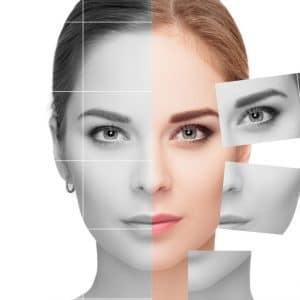
Melasma is a brown patch of skin on the face that occurs due to sun exposure. These brown areas typically appear on the forehead, bridge of the nose, and cheeks. They may also appear on the forearms or any other area that is commonly exposed to the sun. The condition is more common among people with darker skin, possibly because the melanocytes – the cells that produce pigment are already more active than in people with light skin.
Melasma is not to be confused with a temporary suntan or sunburn. The brown spots persist and often appear blotchy. Sometimes they do resolve on their own but they can also spread.
There is also a hormonal link to skin darkening. Women are far more likely to be affected than men. It is very common during pregnancy and is sometimes referred to as the mask of pregnancy. Women taking oral contraceptives can also be affected.
Limelight IPL Treatment
This discolouration does not cause any other problems, but Solihull Medical Cosmetic Clinic under the care of leading laser expert Dr Victor Sagoo is proud to be one of the very few clinics in the UK offering the most powerful IPL treatment that may help improve sun damage, skin rejuvenation and facial redness.
The Cutera LimeLight delivers a non-invasive light treatment that can be customised for different skin tones and ageing skin conditions. The result is an exceptional skin rejuvenation treatment with minimal discomfort.
What is the LimeLight facial?
The LimeLight facial is a new, non-invasive approach to skin rejuvenation using Cutera’s LimeLight. The procedure may be able to improve skin tone and other surface imperfections associated with ageing and photodamage.
What areas can be treated?
The LimeLight Facial is ideal for any part of your face, neck and décolleté with facial redness, telangiectasia (tiny veins) or brown spots. Light (low contrast) brown spots, which were previously difficult to resolve, often respond very well to treatment.
What do treatments feel like?
When the pulse of light is delivered, patients will experience a mild pinching or stinging sensation. Gel is recommended to cool the skin before vascular treatments. Anaesthesia or pain medicine is typically not required.
How long will the treatments take?
Treatment time depends on the area of the body being treated. However, most treatments should take less than one hour.
How many treatments will I need?
Two to six treatments are usually sufficient to see results. Additional treatments may be recommended, especially for excessively sun-damaged skin. The number of treatments required will vary from person to person.
What happens after the treatment?
Immediately following treatment, brown spots will start to darken and your skin may appear slightly red. The treated area may be mildly swollen. This typically lasts a few hours and possibly a day or longer. Make-up can be applied to cover the facial redness.
When will I see results?
Within one to three weeks, the darkened spots will usually flake off and fade. Around the same time, most patients notice that diffuse facial redness or telangiectasia decreases, and the mottled complexion improves.
Will the spots and facial redness reappear over time?
New brown spots, telangiectasia and diffuse facial redness may appear with new sun damage; however, they too can be treated. Remember to always apply broad-spectrum sunscreen when outdoors, to minimize sun damage and the appearance of new spots and diffuse redness. Rosacea is chronic and cannot be “cured” with any laser or light source; however, its appearance can often be improved.
Schedule your consultation now to find out if you are a good candidate for LimeLight Facial.
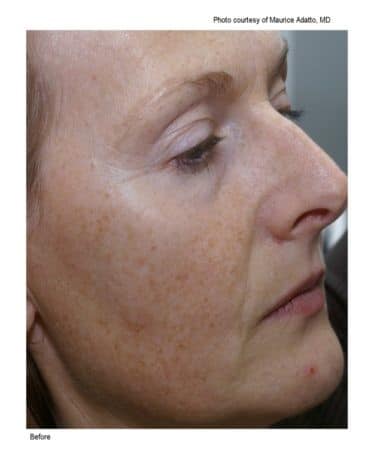
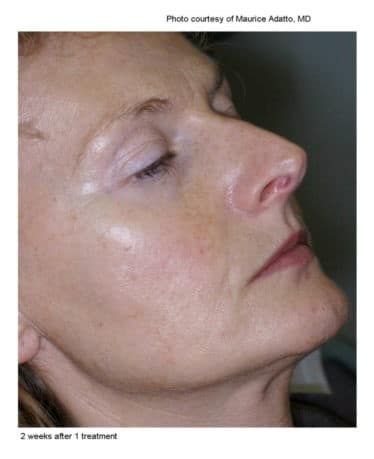
Intense Pulsed Light (IPL) Therapy
Limelight IPL is one of the newer forms of facial rejuvenation. Unlike lasers, which use intense, focused light, IPL is intense broadband light. Although IPL delivers energy to both the superficial and deep layers of the skin, the epidermis is generally spared from damage. Thus, there is virtually no recovery time required after the treatment.
IPL may smooth the skin and may fade age spots, freckles, melasma, and even broken blood vessels. Improvements usually last for about a year with good sun protection. IPL is safer than laser therapy because IPL does not damage the epidermis. There is no recovery time. Unlike laser therapy, however, you may need multiple treatments (the average is four to six, at three-week intervals) to get the full benefit.
Fractional Laser Resurfacing
Laser resurfacing is a treatment that aims to “burn off” age spots, melasma, wrinkles, and fine lines with a laser. Laser resurfacing may remove most age spots, melasma, and wrinkles, often in just one treatment.
Lasers actually remove the outer portion of the skin, called the epidermis. Because of this, you may experience some pain as well as redness and peeling following the treatment. You may even form scabs in the days after the procedure. Expect a recovery time of at least a week.
Chemical peels and topical bleaching creams, including medium-depth peels.
Chemical peels may smooth and firm the skin and may lighten dark areas gradually. The superficial peels, such as a glycolic acid peel, can be done during your lunch hour, and there is no recovery time. Deeper peels are generally more effective but also require a longer recovery. See more details under chemical peels.
Different kinds of peels carry different risks. Superficial peels are usually quite safe. However, you may need a series of superficial peels (done approximately once a month) before you’ll notice a significant improvement.
Jessner Peel
What is Jessner Peel?
A Jessner peel is a medium-depth chemical peel. It is one of the most effective peels to remove superficial layers of the skin. It can be used on all types of skin to treat sun-damaged skin, ageing skin, and lighten areas of hyperpigmentation. A Jessner peel is great for those with acne, thick skin, skin discolouration, moderate wrinkles and oily skin. Oil production will be decreased and clogged sebaceous follicles will be opened. A Jessner peel works great for those with dull skin, white spots on the face, and lip creases.
A Jessner peel combines lactic acid, salicylic acid and resorcinol to exfoliate the skin and penetrate deeper into the skin’s layers. A Jessner peel is for both men and woman who have acne, fine lines or uneven skin tones.
Jessner Peel Benefits
There are many benefits of a Jessner Peel. A Jessner Peel can help not only reduce the appearance of acne but also reduce hyperpigmentation of the skin. Fine lines and wrinkles can be smoothed out, and the skin will be given a youthful glow. The complexion will be improved greatly, and pores may be reduced in size. A Jessner peel can be used to assist with the treatment of Melasma.
The results of the treatment may be temporary. Brown patches can reoccur if a person continues to be exposed to the sun. Even a small amount of sunlight can cause brown patches to return.
The best way to prevent melasma is to limit sun exposure. Ultraviolet (UV) light from the sun stimulates the melanocytes to produce more colour. People should wear a broad-spectrum sunscreen with an SPF of at least 30 every day. UV rays can penetrate clouds and windows, so susceptible people should wear sunscreen at all times. Protective clothing, hats and sunglasses should be worn to reduce the amount of exposed skin.

Book Your Minor Surgery Online Today
For more information about any of the treatments provided or to book a consultation with Dr Sagoo at Solihull Medical Cosmetic Clinic, please call us on 03300 417494
